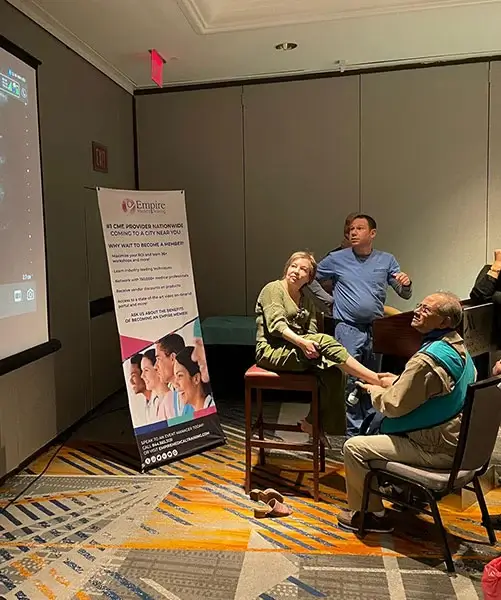Guide to Treating Knee Pain: From Home Remedies to Medical Interventions
By Dr. Stephen Cosentino
PRESIDENT OF EMPIRE MEDICAL TRAINING
Millions of Americans suffer from debilitating knee pain that affects daily activity and quality of life. Its causes include age-related joint deterioration, autoimmune disorders like rheumatoid arthritis, and sports injuries.
Fortunately, most instances of knee pain can be treated and managed over time, and many respond well to longer-term medical interventions. Before you consult a physician about the issue, educate yourself about the most common remedies’ benefits and drawbacks.
Knee Pain Treatment Options
These remedies may reduce pain associated with knee problems and help you do more of the daily activities you love with less discomfort.
Be aware that their cost varies considerably, from trivial in the case of over-the-counter anti-inflammatory drugs to many thousands of dollars in the case of knee surgery. Insurance may partially cover the cost, however.
Rooster Comb Injection (Viscosupplementation)
One of the most promising treatments is a type of hyaluronic acid injection. Known as a rooster comb injection for knee pain because it was once synthesized from real rooster cartilage, this treatment utilizes a naturally occurring substance to deliver longer-term pain relief for people with mild to moderate knee discomfort due to osteoarthritis.
Though minimally invasive and usually performed as an outpatient procedure, rooster comb injection should only be done by a licensed, board-certified medical professional. For best results, patients should follow a comprehensive program of physical therapy, exercise, and weight loss after treatment. Follow-up treatments may be indicated as well.
Noninvasive Home Remedies & Anti-Inflammatory Drugs
These are the least invasive, most affordable knee treatment options, and they don’t require close medical supervision. But from a medical perspective, they’re not exceptionally effective. Examples include:
- Aromatherapy
- Topical CBD creams and ointments
- Oral joint-health supplements
- Ibuprofen and naproxen (over-the-counter anti-inflammatories)
Rheumatoid Arthritis Treatment
Rheumatoid arthritis is a common cause of knee and joint pain. It’s a complicated autoimmune condition that can affect people of all ages, and its management requires close supervision by a medical specialist known as a rheumatologist.
Rheumatologists may prescribe special drugs that lessen the autoimmune response to reduce joint inflammation and associated pain. Be forewarned that these drugs can have serious side effects.
Physical Therapy
Physical therapy is a noninvasive (though intensive) treatment option that involves special exercises designed to improve knee function. It’s most effective when supervised by a trained, licensed physical therapist, and for people with sports- and trauma-related knee injuries.
Knee Injections
Rooster comb injections join several other types of injections proven to reduce knee pain and inflammation. The most common are corticosteroid and platelet-rich plasma injections; both produce results lasting weeks to months. For best results, seek out a licensed provider who has completed an accredited joint injection training program.
Knee Surgery
Knee surgery is often the most effective long-term remedy for many people with age-related knee problems that don’t respond well to other treatments. It may also be the best option for people with certain sports-related knee injuries, such as anterior cruciate ligament (ACL) injury. Types of knee surgery include:
- Total knee replacement surgery, where the entire knee structure is replaced by an artificial joint
- Partial knee replacement, where only the most damaged parts of the knee are replaced (and recovery time is usually faster)
- Arthroscopic knee surgery, a more targeted procedure that repairs specific parts of the knee
- Osteotomy, where the surgeon removes excess material from the thighbone or shinbone to improve knee function


